Charley Peterson and the House of Three Plates
Unsolved History Mystery:
Charley Peterson and the House of Three Plates
by Kathy Heicher
The Eagle County Historical Society delivered breakfast to a dead guy this week.
Specifically, on April 8, a plate of flapjacks, ham and eggs and a tin cup of black coffee were placed on Charley Peterson’s grave in Cedar Hill Cemetery in Gypsum. It’s been 108 years since this quiet, unassuming Swedish bachelor was brutally murdered at his home on the Grand (now Colorado) River. The public has long forgotten the shock of Charley’s murder, and he has slipped from local history awareness.
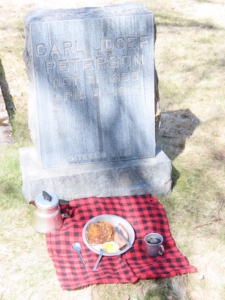
Breakfast left for Charley Peterson on April 8, 2024.
Until now. In the summer of 2023, the ECHS was contacted by an anonymous donor who has long had an interest in Charley Peterson’s sad story, and who also has an interest in preserving local history. The donor offered the ECHS $10,000 to establish the “Charley Peterson Research Fund.” The Historical Society would administer the fund, granting stipends for research into and publication of Eagle County History.
But the donor specified one unusual provision for the generous grant: The ECHS promise that three or more people (never two people) would leave a plate of breakfast on Charley’s grave, marking the anniversary of his death and offering a sort of homage to this humble pioneer and the House of Three Plates.
So, it is only fair to share the story of the incident that prompted the research fund and the graveyard breakfast.
Charley Peterson
Like many of the farmers and ranchers who settled in lower Eagle Valley and Grand River country in the 1880s, Charley was an immigrant, born in Sweden in 1859. He arrived in the United States in 1884 and became a naturalized citizen. His older brother, Andrew Kallquist (Charley most likely simplified his last name when he arrived in the U.S), settled in the town of Gypsum. Charley homesteaded 164 acres on the Grand River in 1898, halfway between Dotsero and Burns. That parcel of land is now the Roundup River Ranch.
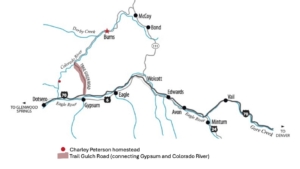
A map of Charley Peterson’s homestead & trail gulch.
He was quiet, unassuming bachelor, known for getting along with people. He lived alone with his loyal dog. Various census records list his occupation as “farmer” or “common laborer.” He was also a businessman: Recognizing the need for travelers to cross the river, Charley operated a ferry on his strategically located homestead, and his cabin sometimes functioned as a sort of Roadhouse. There was no railroad or road in those days along that section of the river. Travelers arrived via the Trail Gulch Road (north out of Gypsum), or from the west, via the Transfer Trail in Glenwood Springs and over the Flat Tops. There were plenty of strangers that came through Charley’s place.
And on April 8,1916, it was apparently strangers who ended Charley’s life. A couple of neighbors who wanted to ford the river from the bank opposite Peterson’s cabin called out for him but got no answer. Eventually, they worked their way across the water, and were horrified to find Charley’s body lying in the brush about 100 feet from his cabin. He had been shot four times, apparently with his own revolver.
Inside the cabin, the table had been set for three people, with the remains of a meal on the plates. Charley’s kindness in feeding a meal to strangers was repaid with murder. The cabin had been ransacked, but the thieves did not find the $104.20 (likely ferry income) that Charley had hidden in a secret drawer.
Investigators noted the boot tracks of two different men in addition to Peterson along the river. Charley’s gun was missing, as was his dog. Charley’s death generated dramatic newspaper headlines. The Leadville newspaper declared the incident “One of the Foulest Crimes in the History of Eagle County.” The mystery was never solved.
Charley was buried in the Gypsum cemetery. His gravestone, likely provided by his brother, listed the murder victim as “Carl Josef Peterson.” After a few decades, although residents of the Colorado River corridor could recount the story of Charley Peterson and the House of Three Plates, he was largely forgotten.
For years, the ECHS was unable to locate the Peterson grave in Gypsum, largely because of the different name on the tombstone. The request by the anonymous donor prompted a search of homestead and census records, which revealed that Charley and Carl Josef Peterson were the same man.
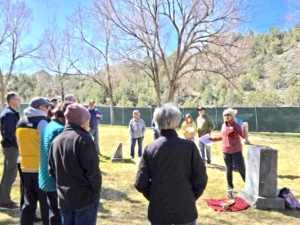
Gathering at Charley Peterson’s grave in Gypsum on April 8, 2024.
Twenty-one people turned out on April 8, 2024 to honor this long-forgotten victim of a terrible crime, and to share a bit of history with the Eagle County Historical Society. After 108 years, Charley’s kindness was being repaid.
We welcome applications for funding from the Charley Peterson Research Fund for a local history project, you can find the guidelines and application at https://eaglecountyhistoricalsociety.com/charley-peterson-research-fund/. You can find the Eagle County Historical Society at Charley’s grave next April 8.
Submitted April 9, 2024.
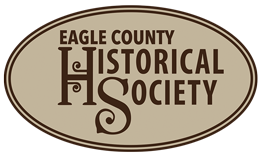
 ECHS
ECHS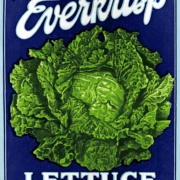
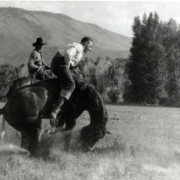
 ECHS & EVLD
ECHS & EVLD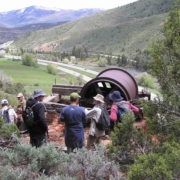
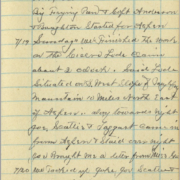 ECHS, EVLD
ECHS, EVLD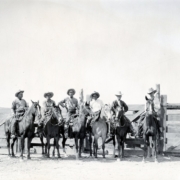
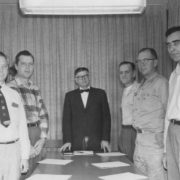
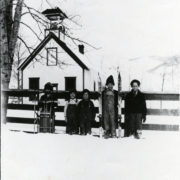 ECHS, EVLD
ECHS, EVLD ECHS, EVLD
ECHS, EVLD